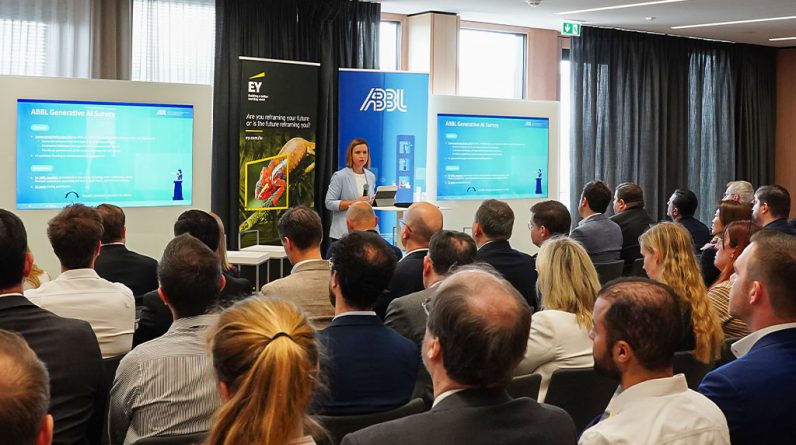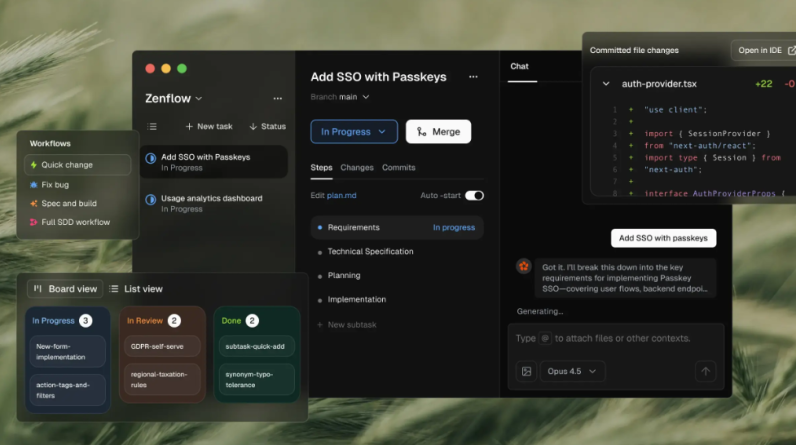
EY and ABBL joined forces to present an event titled “AI in Motion: Real-World Examples from Banks.”
The march towards hyper-automation has rendered technology ever more intelligent and sophisticated, culminating in the emergence of Generative AI (GenAI). Hyper-automation is the strategic application of advanced technologies to rapidly identify and automate as many business processes as possible. This approach has integrated a range of technologies, such as robotic process automation (RPA), machine learning, AI, and now GenAI. Major banks have already pinpointed multiple applications for AI and have embarked on their respective journeys to integrate these technologies. On 4 June 2024, EY and ABBL joined forces to present an event titled “AI in Motion: Real-World Examples from Banks,” which provided insights into the practical uses of AI in the banking industry. The conference highlighted key examples and shared experiences from leading financial institutions that have successfully implemented AI solutions.
According to research from EY EMEIA FSO, 68% of large banks are currently developing AI use cases in house, while 39% have over 10 use cases for AI in mind for their firm. Primarily, banks have been implementing GenAI across the following functions: knowledge search, such as for compliance and reporting, and CRM and customer service.[1] Looking at Luxembourg, we see the banking sector beginning to invest in similar use cases.
What is the outlook in Luxembourg?
The ABBL GenAI survey, conducted in May 2024 across Luxembourg’s financial sector, revealed a significant shift in perception and readiness for GenAI in Luxembourg. A striking 91% of participants now view GenAI as an opportunity, up from 71% the previous year, with 87% of senior management being familiar with the technology, and 4% being “very familiar”. While 43% of banks plan to use GenAI for specific functions, only 13% are looking to integrate it across all major business processes. Notably, the number of institutions lacking the necessary data and infrastructure for GenAI implementation has dropped from 63% in 2023 to just 17% in 2024, indicating a rapid advancement in readiness.
The survey also highlighted that more than half of banks are collaborating with external entities like consultants and tech companies on GenAI projects. The most anticipated benefit of GenAI as cited by respondents is a boost in efficiency and productivity, recognized by 91% of respondents. Common applications include chatbots, HR processes, IT and data management, client services, and administrative tasks. Despite the widespread adoption – two out of three firms allow access to GenAI as a tool for staff – only 35% of banks have established clear guidelines for GenAI usage.
Where is value creation expected in the near future?
The potential for value addition through AI in the banking sector is immense, offering transformative solutions that streamline operations and enhance customer experiences. Here are just some examples of the most anticipated use cases that demonstrate the power of AI in revolutionizing the industry.
Quickly interpreting new regulations and requirements, and optimizing response time for basic legal queries: For instance, an Azure OpenAI-powered chatbot can swiftly provide clients with precise answers from 1,000+ regulatory circulars, including those from the CSSF, and resources like EY’s Investment Funds in Luxembourg Technical Guide.
Extracting and quickly interpreting intelligence from documents: GenAI revolutionizes document analysis, reducing the months-long process of reviewing reports to rapid information processing, summarization, and gap analysis, complete with context-specific, actionable insights.
Partially or fully automating customer support processes: GenAI is instrumental in automating customer support, offering rich, human-like interactions and insightful analytics for CRM externally, while internally, it assists in case routing, action suggestions, data-driven marketing, and real-time performance tracking.
What should your bank’s first 100 days of GenAI implementation look like?
The initial 100 days of implementing GenAI should be a structured journey beginning with pilot testing Proof of Concepts (PoCs) in secure environments to ensure safety and reliability. Following this, it’s crucial to brainstorm and ideate potential GenAI use cases, forming a comprehensive strategy that aligns with the bank’s objectives. Once a clear plan is in place, the next step is to build and implement the use case, carefully integrating GenAI into the bank’s existing systems. After successful implementation, the focus should shift to upscaling the use case across the bank, expanding its reach and impact. Throughout this process, it’s essential to continuously measure the benefits of GenAI, analyzing its effectiveness and extracting valuable learnings to inform future initiatives and enhance the bank’s technological capabilities.
Getting it right during these first 100 days is essential because this period sets the foundation for GenAI’s role within the bank. A well-executed initial strategy can lead to early successes that build momentum and support for wider adoption. It also helps to identify and mitigate potential risks early on, ensuring that the technology is being used ethically and in compliance with regulatory standards.
What experience do EY and ABBL have with GenAI?
EY’s experience with GenAI has been characterized by a swift deployment of a basic OpenAI solution within a month of its business release, followed by a quick group-wide rollout supported by intranet posts and virtual trainings to encourage adoption. EY has also been dedicated to monthly updates, enhancing the solution’s functionalities and its integration with other EY systems. Meanwhile, ABBL has been proactive in exploring GenAI through various initiatives, including the establishment of a dedicated working group, sessions on regulatory compliance, showcasing AI solutions at their Fintech & Innovation Forum, collaborating on research for AI-driven AML due diligence with Luxembourg University, developing training courses, and conducting annual surveys to track the adoption of GenAI technologies like ChatGPT.
[1] How Europe’s FS leaders are approaching generative AI adoption, EY, November 2023






